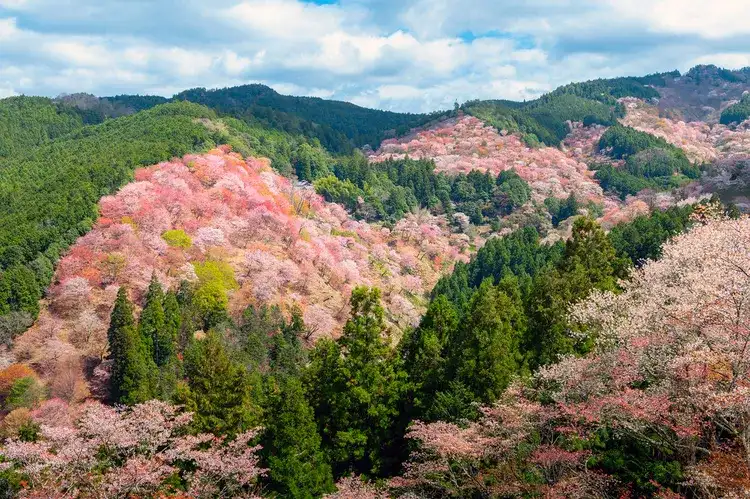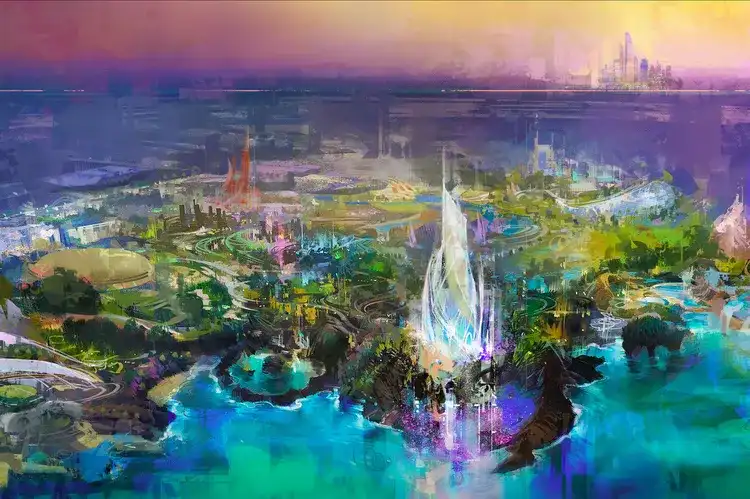For travelers willing to venture beyond Japan’s usual hotspots of Tokyo and Kyoto, Mount Yoshino delivers an unforgettable immersion into one of the country’s most iconic seasonal experiences. Tucked within Yoshino-Kumano National Park in Nara Prefecture, this mountain offers more than just scenic views — it’s home to over 30,000 cherry blossom trees, sacred temples, historic trails, and some of the best hanami (flower viewing) opportunities in all of Japan.
Why Mount Yoshino Is a Must-Visit During Cherry Blossom Season
Japan’s cherry blossom season is a world-famous phenomenon, drawing millions of visitors every year. But while most flock to well-known urban centers, Mount Yoshino — located about 55 miles from Osaka — offers a more tranquil, spiritually rich alternative steeped in history and natural beauty. The area isn’t just picturesque — it’s sacred. For over a millennium, cherry blossoms have bloomed here in the shadow of temples and shrines, creating a landscape of ethereal beauty and deep cultural significance.
A Mountain Draped in Sakura
Stretching along a five-mile ridge, Mount Yoshino is said to be home to around 30,000 cherry trees — some over 1,300 years old. The landscape transforms in spring when these trees erupt into delicate clouds of pink and white, attracting locals and travelers alike who partake in hanami, the traditional practice of flower viewing.
What makes Yoshino particularly special is its natural staggered blooming. The mountain is divided into four distinct sections — each at a different elevation — which allows cherry blossoms to bloom at slightly different times. This means a longer window for visitors to enjoy the season at its peak.
- Shimo Senbon (Lower Thousand Trees): Located at the base, this area blooms first and offers access to the Yoshino Ropeway.
- Naka Senbon (Middle Thousand Trees): Features temples, shrines, and vibrant hanami spots.
- Kami Senbon (Upper Thousand Trees): Quieter and more secluded with sweeping views from above.
- Oku Senbon (Inner Thousand Trees): Remote and peaceful, this area blooms later and offers one of the most pristine hanami experiences.
Things to See and Do on Mount Yoshino
Though cherry blossoms are the main attraction, Mount Yoshino offers a wealth of sights and activities that go beyond the spring spectacle. From sacred spiritual sites to high-altitude observation decks, the mountain invites exploration in every season.
Ride the Yoshino Ropeway
Start your ascent with the Yoshino Ropeway, one of the oldest aerial tramways in Japan. It gives visitors a scenic lift up the mountainside while offering aerial views of the blooming cherry trees below. The ride itself is short, but the vistas are unforgettable.

Visit Ancient Temples and Shrines
In the Naka Senbon area, visitors will find Kinpusenji Temple, one of the most important temples in Shugendo Buddhism, as well as the Yoshimizu Shrine, a historic retreat that once sheltered samurai and emperors. These sacred spaces are especially moving in spring, surrounded by flowering trees and a sense of timeless peace.
Hike to Observation Points
For those willing to hike a little further, the Hanayagura Observation Point in the Kami Senbon section offers one of the most panoramic views of the cherry blossom canopy below — a breathtaking reward for the hour-long walk from the upper ropeway station. Deeper into the Oku Senbon section, the Takagiyama Observation Deck provides a quieter, less-crowded alternative with blossoms typically peaking about a week later than the rest of the mountain.
Best Time to Visit Mount Yoshino
Cherry blossom season in Mount Yoshino generally starts in late March and peaks by mid-April. Thanks to the mountain’s range in elevation, different areas bloom at slightly different times, allowing visitors a longer window to catch the sakura in full splendor. Still, it’s a good idea to check the latest sakura forecast before planning your trip, as bloom timing is heavily influenced by temperature and weather conditions.
If your travel dates fall outside cherry blossom season, don’t worry — Mount Yoshino’s appeal isn’t limited to spring. In summer and autumn, the mountain trails provide cool shade and bursts of foliage color, while the historic temples remain open year-round.
How to Get There
Mount Yoshino is best accessed by train from Osaka, Kyoto, or Nara, followed by a bus or ropeway ride. However, renting a car is the most convenient option, especially for travelers hoping to explore beyond the main cherry blossom areas or visit early in the morning before the crowds arrive.
Tips for Visiting Mount Yoshino
- Start early: To avoid crowds during peak bloom, plan to arrive early in the morning.
- Bring walking shoes: The trails can be steep and uneven — wear comfortable footwear.
- Stay overnight: Yoshino Town has traditional inns where you can experience Japanese hospitality and cuisine.
- Pack for the weather: Spring can bring sudden rain or chilly breezes at higher elevations.
A Final Word
Mount Yoshino isn’t just a cherry blossom hotspot — it’s a sacred, living landscape where nature, history, and spirituality blend together in harmony. Whether you come for the sakura or the solitude, the ancient temples or the mountain trails, you’ll leave with memories as vivid as the blossoms themselves.








